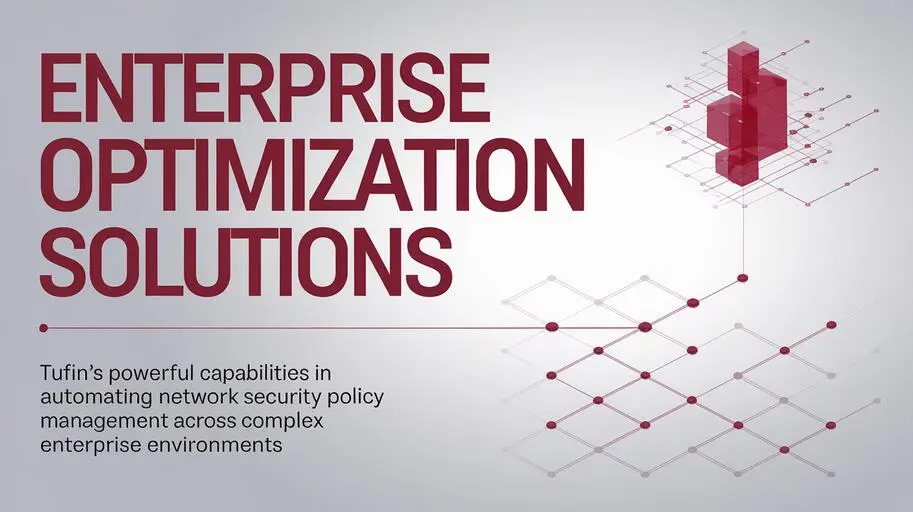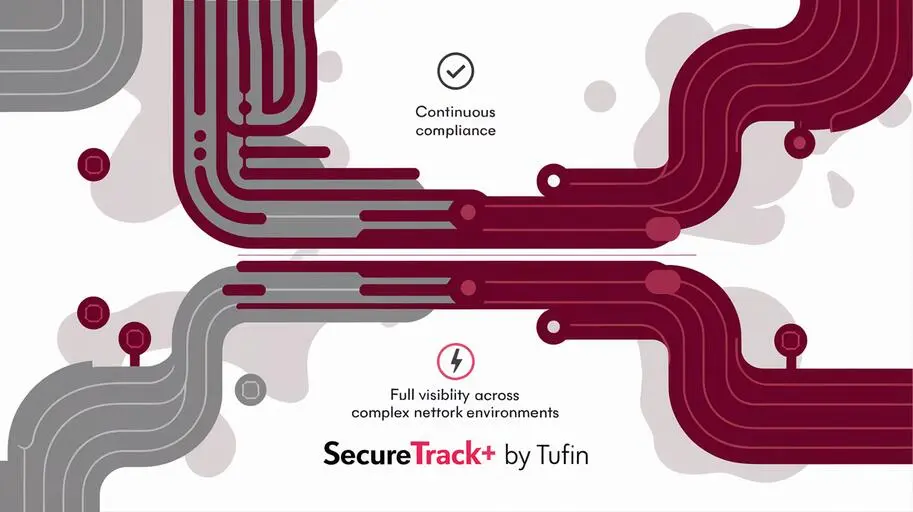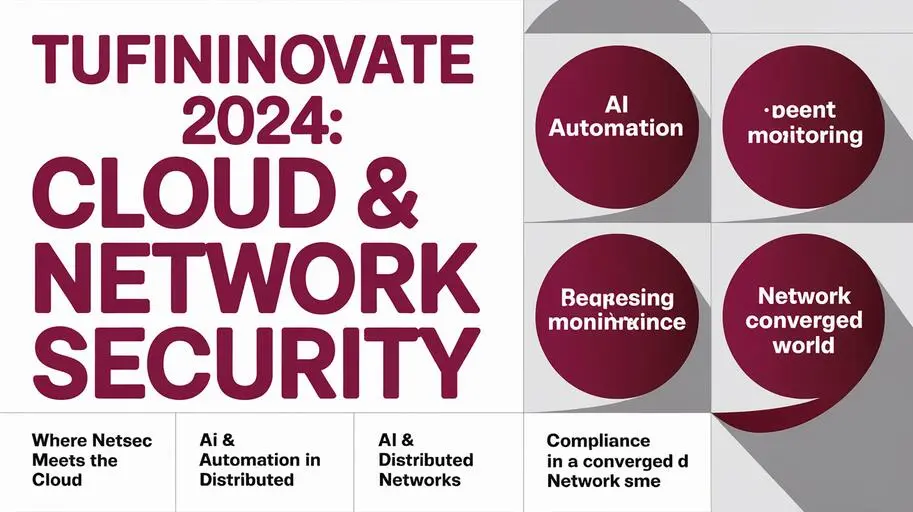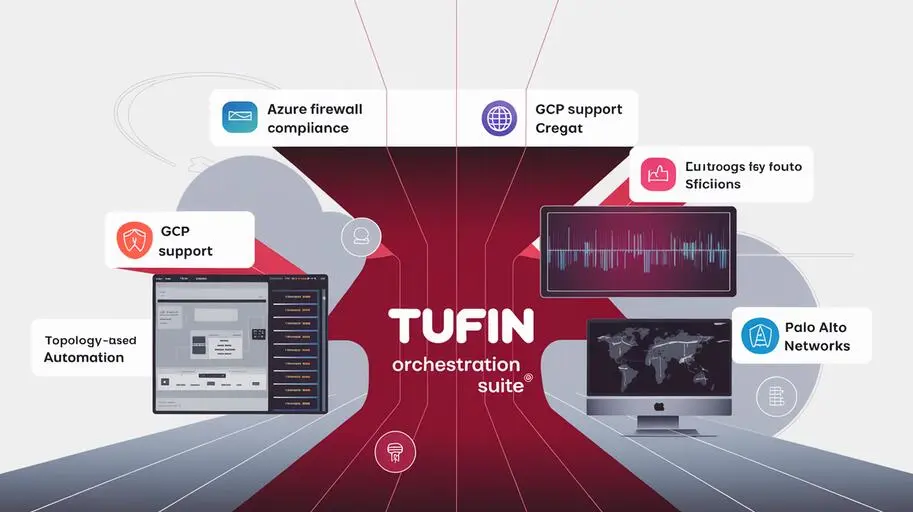
In today’s dynamic world, where digital transformation is rapidly changing the business landscape, hybrid clouds have become an integral part of many organizations’ infrastructure. However, along with the advantages of flexibility and scalability, hybrid clouds also bring new security challenges. Traditional approaches to network security are proving insufficient to protect the distributed and dynamic environment of a hybrid cloud. This is where Tufin comes in – one of the leading solutions for hybrid cloud security, which provides automated security policy management, risk analysis, and centralized security management across your entire infrastructure.
Why Hybrid Cloud Security Is Complex and How Tufin Solves This Problem
The transition to a hybrid cloud infrastructure creates unique security challenges:
- Disparate security tools: Traditional security tools are not designed to work in a hybrid cloud, leading to fragmentation and a lack of end-to-end visibility.
- Policy management complexity: Manually managing security policies across different cloud environments and on-premises data centers is complex, time-consuming, and prone to errors.
- Dynamic nature of the cloud: Constant changes in the cloud infrastructure make it difficult to maintain compliance and respond quickly to new threats.
Tufin Orchestration Suite solves these problems by providing a comprehensive platform for security management in the hybrid cloud. Tufin’s hybrid cloud solutions enable organizations to:
- Gain full network visibility: Tufin provides centralized network visibility across the entire hybrid cloud infrastructure, including AWS, Azure, GCP, and on-premises data centers. It is important to note that Tufin provides visibility at the level of security policies and network device configurations, collecting data on the configuration of firewalls and security rules in cloud platforms.
- Automate security tasks: Tufin automates change management, risk analysis, and compliance, freeing up IT staff resources for more strategic tasks.
- Strengthen security control: Tufin allows organizations to apply consistent security policies across the entire hybrid cloud infrastructure, ensuring a consistent level of security and reducing the risk of attacks. The effectiveness of applying unified security policies depends on the correct configuration and integration of Tufin.
How Tufin Ensures Hybrid Cloud Security: A Technical Overview
Tufin Orchestration Suite consists of several key components that together provide comprehensive hybrid cloud protection:
Tufin SecureTrack: Visibility and Analysis
Tufin SecureTrack provides full network visibility across the entire hybrid cloud infrastructure. It collects data from various sources, including firewalls, cloud platforms (AWS, Azure, GCP). Integration with intrusion detection systems (IDS) is usually done through SIEM, not directly. Tufin SecureTrack is primarily focused on the configuration of network devices and cloud services. Tufin SecureTrack also performs risk analysis, identifying potential vulnerabilities and providing recommendations for remediation. It is important to note that risk analysis is limited to configuration analysis and does not include vulnerability scanning at the application or OS level. Tufin Network Security Visibility and Control – this is what allows you to see the whole picture.
Tufin SecureTrack Features:
- Network visualization: Displaying network topology and traffic in real-time.
- Risk analysis: Identifying vulnerabilities and weaknesses in network configuration.
- Compliance auditing: Automatically checking compliance with PCI DSS, HIPAA, GDPR, and other standards.
- Reporting: Creating customizable reports on the state of network security.
Tufin SecureChange: Automation and Change Management
Tufin SecureChange automates change management in security policies. It allows organizations to automate the process of requesting, approving, and implementing changes to security policies, reducing the risk of errors and speeding up response times to new threats. Tufin SecureChange also integrates with various IT Service Management (ITSM) systems, providing seamless integration with existing processes. Full automation requires integration with ITSM and other systems. Tufin network change management – this is a way to avoid routine and errors when changing security rules.
Tufin SecureChange Features:
- Workflow automation: Configuring automated workflows for requesting, approving, and implementing changes to security policies.
- Change impact analysis: Assessing the potential impact of changes to security policies on network security and availability.
- Automated compliance checking: Automatically checking that changes to security policies comply with PCI DSS, HIPAA, GDPR, and other standards.
- Integration with ITSM: Integration with ServiceNow, Remedy, and other ITSM systems.
Tufin SecureApp: Application Security
Tufin SecureApp provides application security in the hybrid cloud. It allows organizations to define and enforce security policies at the application level, providing microsegmentation and protection against application attacks. Tufin SecureApp also integrates with various application development and deployment tools (CI/CD), ensuring security throughout the application lifecycle. Microsegmentation with Tufin allows you to protect each application individually.
Tufin SecureApp Features:
- Microsegmentation: Defining and enforcing security policies at the application level, limiting access between applications and networks.
- Application lifecycle management: Automatically discovering and protecting new applications as they are deployed.
- Integration with CI/CD: Integration with Jenkins, GitLab, and other CI/CD tools.
- Vulnerability analysis: Identifying vulnerabilities in applications and recommendations for remediation.
Practical application of Tufin in the cloud: use cases and examples
Let’s consider several use cases of Tufin to solve specific security problems in the hybrid cloud:
Scenario 1: Automating Firewall Rule Changes in AWS
Imagine that your organization uses AWS to host web applications. Each time developers make changes to applications, it is necessary to manually update the firewall rules in AWS Security Groups. This process is time-consuming, prone to errors, and can lead to delays in application deployment.
With Tufin SecureChange, you can automate this process. Developers can request changes to firewall rules directly from their CI/CD tools. Tufin SecureChange automatically analyzes the request, checks it for compliance with security policies, and, if necessary, approves and implements the change. This type of security task automation significantly speeds up development.

Scenario 2: Ensuring PCI DSS Compliance in Azure
If your organization processes payment cards, it must comply with the PCI DSS standard. This means that you must regularly check your systems for compliance and provide evidence of compliance to auditors.
Tufin SecureTrack can help you ensure PCI DSS compliance in Azure. It automatically checks the configuration of your network and systems for compliance with PCI DSS and generates detailed compliance reports. This greatly simplifies the audit process and reduces the risk of non-compliance.
Scenario 3: Microsegmentation of Applications in GCP
To protect your applications from attacks, you need to microsegment your network, limiting access between applications and networks. Tufin SecureApp allows you to easily create and enforce microsegmentation policies in GCP. You can define access rules at the application level, limiting traffic to only the necessary ports and protocols. This significantly reduces the risk of attacks and increases the overall security of your infrastructure.
Tufin integration with cloud platforms allows you to effectively solve problems of varying complexity.
Integration of Tufin with Other Security Solutions
Tufin integrates with a wide range of other security solutions, extending the security capabilities of your hybrid cloud infrastructure.
Integration with SIEM
Integration with SIEM allows Tufin to transmit security event information to your SIEM system for centralized security monitoring and incident response.
Integration with Vulnerability Scanners
Integration with Vulnerability Scanners allows Tufin to receive information about vulnerabilities in your network and applications and use this information to prioritize security tasks.
Integration with Intrusion Detection Systems (IDS)
Integration with Intrusion Detection Systems allows Tufin to automate the process of changing security policies based on information from IDS. It’s important to note that Tufin does not guarantee instant automatic blocking of attacks.
Deploying and Configuring Tufin: First Steps
Deploying Tufin involves several stages:
- Planning: Define deployment goals, scope, and integrations with existing systems.
- Installation: Install the Tufin Orchestration Suite on dedicated servers or in a cloud environment.
- Configuration: Configure Tufin to connect to your network, cloud platforms, and other security solutions.
- Training: Train your IT staff to use Tufin to manage hybrid cloud security.
Tufin deployment and configuration requires careful planning and understanding of your network and cloud infrastructure architecture.
Conclusion: Tufin – Your Reliable Partner in Securing Hybrid Clouds
Hybrid cloud security is a complex task that requires a comprehensive approach. Tufin provides organizations with the tools to automate security policies, analyze risks, and centrally manage security across the hybrid cloud infrastructure. Tufin allows organizations to reduce the risk of attacks, ensure compliance, and free up IT staff resources for more strategic tasks.
It is worth remembering the limitations of Tufin. For example, SecureTrack does not replace a vulnerability scanner, and automation requires integration with other systems.
Tufin solutions for hybrid clouds – this is your partner in ensuring hybrid cloud security, providing a set of tools for security policy management, security automation and network visibility. Do not let the complexities of the hybrid cloud compromise your security. Use Tufin to strengthen protection, optimize operations, and achieve compliance.
Contact us today to learn more about how Tufin can help you protect your hybrid cloud infrastructure.
FAQs on: Hybrid Cloud Security with Tufin
-
What is Tufin and how does it help in securing hybrid clouds?
Tufin is a leading hybrid cloud security solution that provides security policy automation, risk analysis, and centralized security management across your entire infrastructure, including AWS, Azure, GCP, and on-premises data centers. It helps organizations address the unique security challenges that arise when migrating to a hybrid cloud infrastructure.
-
What are the main security problems that Tufin solves in hybrid clouds?
Tufin addresses the problems of disparate security tools, the complexity of policy management, and the dynamic nature of cloud infrastructure by providing a comprehensive platform for security management in the hybrid cloud.
-
What is Tufin Orchestration Suite and what components does it include?
Tufin Orchestration Suite is a comprehensive platform for security management in the hybrid cloud. It consists of several key components: Tufin SecureTrack (visibility and analysis), Tufin SecureChange (automation and change management), and Tufin SecureApp (application security).
-
How does Tufin SecureTrack provide network visibility in the hybrid cloud?
Tufin SecureTrack provides complete network visibility across the entire hybrid cloud infrastructure by collecting data from various sources, such as firewalls, cloud platforms (AWS, Azure, GCP), and intrusion detection systems (IDS), and presenting it in a centralized dashboard. It also performs risk analysis.
-
How does Tufin SecureChange automate change management in security policies?
Tufin SecureChange allows organizations to automate the process of requesting, approving, and implementing changes to security policies, reducing the risk of errors and speeding up response times to new threats. It also integrates with various IT service management (ITSM) systems.
-
What is Tufin SecureApp and how does it provide application security in the hybrid cloud?
Tufin SecureApp provides application security in the hybrid cloud by allowing organizations to define and enforce security policies at the application level, enabling microsegmentation and protection against application attacks. It also integrates with various application development and deployment tools (CI/CD).
-
What use cases can be given as an example of using Tufin to automate security tasks in AWS?
One scenario is automating firewall rule changes in AWS. Tufin SecureChange can automate the process of requesting, analyzing, verifying, and implementing changes to AWS Security Groups rules, accelerating development and reducing the number of errors.
-
How does Tufin help ensure PCI DSS compliance in Azure?
Tufin SecureTrack automatically checks the configuration of your network and systems for compliance with PCI DSS requirements in Azure and generates detailed compliance reports, simplifying the audit process and reducing the risk of non-compliance.
-
How does Tufin provide microsegmentation of applications in GCP?
Tufin SecureApp makes it easy to create and enforce microsegmentation policies in GCP. You can define access rules at the application level, restricting traffic to only the necessary ports and protocols, which reduces the risk of attacks and increases the overall security of your infrastructure.
-
With what other security solutions does Tufin integrate?
Tufin integrates with a wide range of other security solutions, including SIEM (for centralized security monitoring and incident response), vulnerability scanners (for prioritizing security tasks), and intrusion detection systems (IDS) (for responding to detected intrusions in real time).




